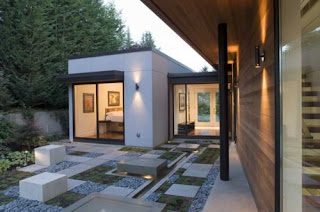C. T. Stubbs gave a lecture on King Stubbs's buildings in northern Louisiana. King Stubbs is the father of C. T. Stubbs. The beginning of the lecture was on the power of architectural history. C. T. noted that design elements have been copied for over 2,500 years. He focused on the tradition of classical architecture that was based on measurements, geometry, and modules. He said that King Stubbs did the same in north Louisiana that Palladio did in the Tuscan country-side - design residential buildings in a classical manner for contemporary life.
C. T. continued his lecture by observing the establishment of classical architecture in America. He said that Thomas Jefferson brought classical architecture from Europe after he saw Maison Curree and designed many buildings based off of that building and many others containing classical elements.
King Stubbs was classically trained at Tulane University and worked with Smith Associates for 8 years before striking out on his own. In his career, Stubbs had about 700 of his designs buildt in south Arkansas, north Louisiana, and west Mississippi. The rest of the lecture contained several indepth looks at a few selected buildings.
C. T. continued his lecture by observing the establishment of classical architecture in America. He said that Thomas Jefferson brought classical architecture from Europe after he saw Maison Curree and designed many buildings based off of that building and many others containing classical elements.
King Stubbs was classically trained at Tulane University and worked with Smith Associates for 8 years before striking out on his own. In his career, Stubbs had about 700 of his designs buildt in south Arkansas, north Louisiana, and west Mississippi. The rest of the lecture contained several indepth looks at a few selected buildings.



